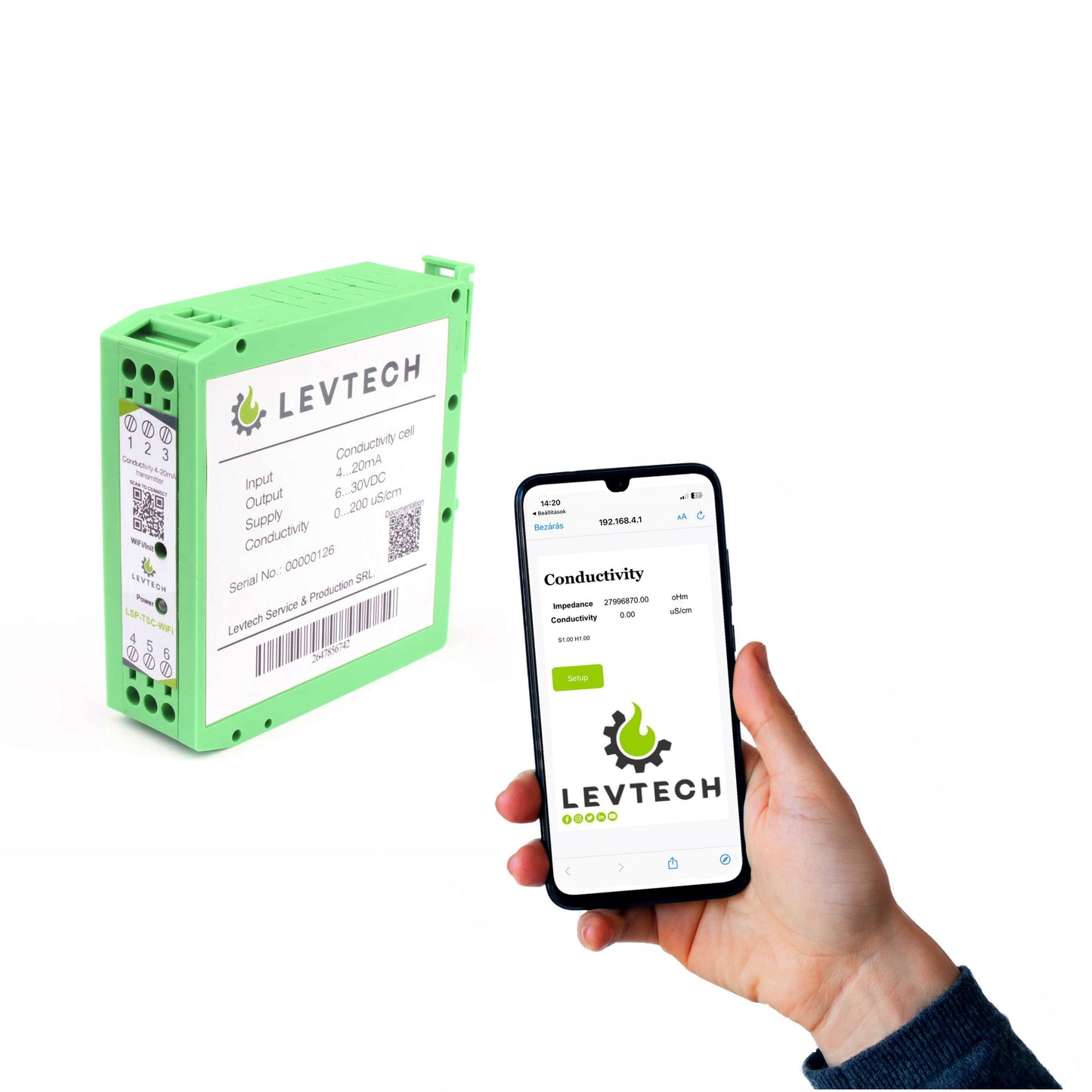- 30-day returns
- Fast shipping
- Secure payments
- Over 300,000 products
Product Description
Levtech - LSP-TSC-WIFI Our conductivity transmitter measures liquid conductivity with any standard 2 electrode analog sensor. This transmitter is a measuring device that measures the resistance between the conductivity sensor cells and it converts the measured value to a linear 4-20mA analog signal, which can be connected to a PLC. The accuracy of the measurement depends highly on the quality of the sensor.
About this deviceThis conductivity transmitter measures the electrical resistance of a solution using a sensor with electrodes, converts this resistance into a conductivity value, and then, transmits this value for monitoring and control purposes. A brief explanation of how conductivity measuring and the transmitter work:
SensorThe transmitter is equipped with a conductivity sensor or probe, which typically consists of two or four electrodes. These electrodes are made from materials that are good conductors of electricity, often stainless steel. The precision of these conductivity measurements significantly hinges on the quality of the conductivity sensor. While our conductivity transmitter can be paired with any conductivity sensor, we always suggest using our high-quality sensors to achieve the best results.
Measurement PrincipleWhen the sensor is immersed in a solution, the conductivity of the solution affects the electrical resistance between the electrodes. Solutions with higher ion concentrations (higher conductivity) allow electric current to pass more easily between the electrodes, resulting in lower resistance. For instance, if we immerse the conductivity sensor in saltwater, a good conductor, it registers high conductivity due to the effortless flow of current between the electrodes. Conversely, when the sensor is placed in purified water, which lacks good conductive properties, the transmitter records low water conductivity
Excitation SignalThe transmitter generates an alternating sinusoidal current (AC) excitation signal that is applied to the electrodes of the sensor. This excitation signal induces a small electric field in the solution around the electrodes. On the wifi model, you can change the frequency of the excitation signal.
Detection of Voltage DropThe transmitter measures the voltage drop across the electrodes caused by the current flowing through the solution. This voltage drop is proportional to the solution’s conductivity. A higher conductivity solution will have a lower voltage drop and vice versa.
Calibration and CompensationTo convert the voltage drop into a meaningful conductivity value, the transmitter is often calibrated using solutions of known conductivity. Conductivity is also influenced by temperature. Take a look at our product that can already compensate for temperature.
TransmissionOnce the transmitter calculates the conductivity value, it can transmit this data to a control system, data logger, or other monitoring devices. Using a 2-wire current loop communication process, the transmitter translates the measurement into a 4-20mA output.
Maintenance and CleaningIt’s important to regularly clean and maintain the conductivity sensor since the accumulation of deposits or contaminants on the electrodes can affect the accuracy of measurements.
VariationsChoose the product that best suits your needs from our range. Our conductivity transmitters are available in 2 versions: LSP-TSC and LSP TSC-WIFI. The WiFi version allows the user to connect and change the parameters.
Features- Cable capacity compensation
- 4 to 20 mA analog signal output
- TS-35 DIN rail mounting for flexible installation
- Accurate measurement of liquid conductivity (+/-0.1% accuracy)
- IP20 protective casing
- Screw terminals
- Electrically isolated input, output, and supply for safety
- Power LED
- Cyclical self-calibration
- WiFi module for easy configuration.











